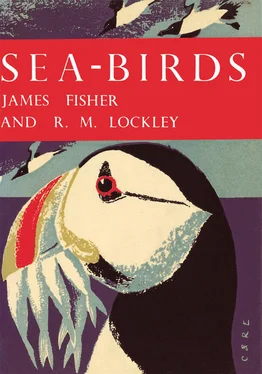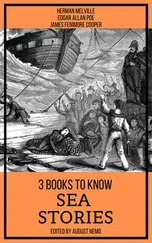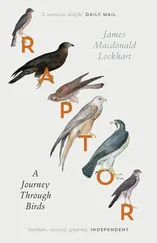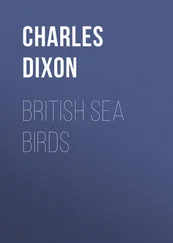The Florida coast has one of the best stations in the U.S.A. for the roseate tern. The darter, which most North Americans allude to as the water-turkey (it is a fresh water lover), and the double-crested cormorant of Florida, commonly nest in trees in many swampy places along the coast. Brown pelicans nest by lagoons and in mangrove-keys on both sides of the peninsula.
Naturalists accustomed to British coast conditions can have little notion of the interminability of the low-lying eastern coast of North America. Indeed, on the entire stretch of mainland coast from Southern Mexico to Maine, about four thousand miles, there is not a single cliff, nor indeed a mountain coming down to the sea. All through Florida, Georgia, the Carolinas, Virginia and Maryland to the New England States, runs a complex of lowland and shallow shores, broken in places by inlets such as those of Chesapeake and Delaware Bays and Long Island Sound. This is a tern coast. In the northern parts the effect of the Labrador current is felt and there is a fairly steep decline in temperature, which is why such tropical forms as the brown pelican and Florida double-crested cormorant drop out of the community in South Carolina. One tropical species which is distributed all along this coast, however, is the laughing gull; and the gull-billed tern reaches north to Virginia. Rather oddly, two terns, the common tern and Forster’s tern, appear to avoid the mainland coast from Florida to South Carolina, though they breed to the west and north of it.
The distribution of tern populations on this Atlantic coast has had a chequered history, and is dealt with in some detail in the chapter on Sea-Bird Populations (Chapter 3, see here).
In the New England States and Maine we encounter the first truly northern elements in the Atlantic sea-bird fauna, and a community of sea-birds which is intensively watched and studied, as is the very similar community on the eastern side of the Atlantic, ten degrees farther north. We now meet not only some of the terns but some of the gulls that breed in the British Isles. In Maine and New Brunswick, where little cliffs begin and the wooded coast closely resembles the skerry-guard of Stockholm, and other parts of the Baltic archipelago, we find the southernmost auks—black guillemots Cepphus grylle , puffins Fratercula arctica , and perhaps still a pair or two of razorbills Alca torda. We even find tubenoses breeding in Maine, birds which we had last encountered in the Caribbean Antilles. (Apart from Audubon’s shearwater and the rare diablotin ( see here), which nest in various of the Antilles, no breeding petrel is found in the western North Atlantic south of Maine, save on Bermuda.)
The rocks and coral reefs of Bermuda, which is 580 miles from Cape Hatteras, the nearest point on the United States mainland, support an interesting little community of sea-birds, which consists of the northernmost outposts of the breeding population of an otherwise completely tropical species, the white-tailed tropic bird Phaëthon lepturus , besides the common tern, the roseate tern, possibly the Manx shearwater Puffinus puffinus , Audubon’s shearwater, and the cahow Pterodroma cahow , thought to be extinct for many years.
It is in the Bay of Fundy, then, on the borders of the U.S. and Canada (Maine and New Brunswick) that the northern birds really begin. Here in burrows in the island rocks nest the southern elements of the rather small Atlantic population of Leach’s petrel Oceanodroma leucorhoa. Here, too, are the representatives of the northern race of double-crested cormorant, which are separated by a gap of some hundreds of miles from the geographical race of the same species belonging to Florida and the Carolinas.
Other birds which come on the scene between Cape Cod and the Bay of Fundy are the great black-backed and herring-gulls, Larus marinus and L. argentatus , which are now quickly spreading south down the coast, and the arctic tern Sterna paradisaea , which still nests as far south as Cape Cod. If we move north to the Gulf of St. Lawrence, we can also bring in an outpost population of the European cormorant Phalacrocorax carbo , the ring-billed gull Larus delawarensis , which is very closely related to our common gull, the common guillemot Uria aalge , and, rather surprisingly, an arctic species, Brünnich’s guillemot Uria lomvia , whose breeding distribution extends from the Magdalen Islands via Newfoundland and Labrador to the High Arctic There is a curious relict population of the Caspian tern also here. In many ways the Gulf of St. Lawrence has arctic properties and there is, as we have seen, a very steep gradient in water temperature at its mouth, at the convergence of the west wind drift and the Labrador current. Here we find the southern outposts of the largest temperate North Atlantic sea-bird, the gannet Sula bassana —though the majority of its breeding-population is found on the other side of the ocean; and we meet our first kittiwakes Rissa tridactyla.
In structure the coasts of the Atlantic right round from Maine via Nova Scotia, the Gulf of St. Lawrence, Newfoundland, Labrador, Greenland and Iceland to Britain, have a good deal of similarity. They have a fairly even supply of estuaries, inlets, beaches, sands, cliffs, skerries, stacks and islands, and it is probable that the distribution of no sea-bird is seriously limited by lack of suitable nesting sites.
There are two inland species of North American dark-headed gull, Franklin’s gull Larus pipixcan , and Bonaparte’s gull L. philadelphia , neither of which breeds near the coast.
From the Gulf of St. Lawrence, via Newfoundland, Labrador, Greenland and the Canadian Arctic Archipelago, we find a gradual disappearance of the temperate, sub-arctic and some low arctic species as we progress towards the shores where the sea is still near-freezing in July—the true High Arctic. In Newfoundland we reach the limit for breeding gannets, ring-billed gulls and common terns, and perhaps also Caspian terns. The Leach’s petrels breed as far as Newfoundland Labrador, but no farther, and it is doubtful whether the double-crested cormorant now breeds as far. South-west Greenland is less ‘arctic’ than opposite parts of the Canadian Arctic Archipelago at the same latitude; and it is not surprising that some species extend beyond Labrador to West Greenland, though not to Baffin Island and the other Canadian islands. Such species are the razorbill and common guillemot, the latter having only one small colony in West Greenland. The European cormorant extends to West Greenland and previously had a small outpost in Baffin Island, from which it has now disappeared, and it is also extinct in Newfoundland Labrador, after much human persecution. The puffin does not breed in the Canadian Arctic but goes far north in Greenland where it is of a distinctive, large arctic race.
Species which extend in breeding-range all the way from Newfoundland to Arctic Greenland and Canada are the herring-gull, great black-back, kittiwake, arctic tern and black guillemot. All these except the blackback reach the High Arctic, if we regard the Iceland gull Larus argentatus glaucoides , as a herring-gull, as we think we should.
The glaucous gull Larus hyperboreus , does not now breed in Newfoundland, but nests commonly from Newfoundland Labrador all the way to the High Arctic, as does the arctic skua Stercorarius parasiticus; two other skuas, the pomarine S. pomarinus , and the long-tailed skua S. longicaudus , do not breed in Labrador, but farther north in both Canadian and Greenland Arctic. On the west side of the Atlantic-Arctic the fulmar Fulmarus glacialis , breeds no farther south than Greenland and Baffin Island, although it nests south to about latitude 50° north on the east side of the Atlantic.
Читать дальше












